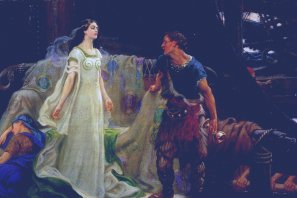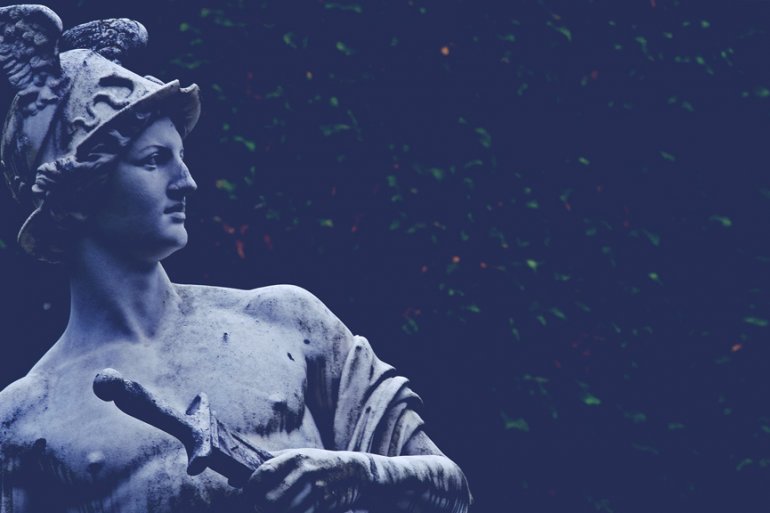The exploration of ancient symbols often reveals hidden threads connecting diverse cultures. In the Maier Files Chronicles, we delve into the higher meaning of the swastika, tracing its roots through various traditions and shedding light on its symbolism beyond conventional interpretations. Herman Wirth’s research on the Ur-Nordic races in Germany serves as a guiding beacon, unraveling the swastika’s significance in a broader, universal context. The Hyperborean Race: Unveiling the Nordic Origin Wirth’s groundbreaking work challenges...
The School of Gnosticism was divided into two major parts, commonly called the Syrian Cult and the Alexandrian Cult. These schools agreed in essentials, but the latter division was more inclined to be pantheistic, while the former was dualistic. While the Syrian cult was largely Simonian, the Alexandrian School was the outgrowth of the philosophical deductions of a clever Egyptian Christian, Basilides by name, who claimed to have received his instructions from the Apostle Matthew. Like Simon...
The date of the founding of the Odinic Mysteries is uncertain, some writers declaring that they were established in the first century before Christ; others, the first century after Christ. Robert Macoy, 33°, gives the following description of their origin: “It appears from the northern chronicles that in the first century of the Christian Era, Sigge, the chief of the Aser, an Asiatic tribe, emigrated from the Caspian sea and the Caucasus into northern Europe. He directed his course northwesterly from […]...
The nornir or norns were a group of female supernatural beings closely related to ideas about fate in Old Norse tradition. Karen Bek-Pedersen provides a thorough understanding of the role played by norns and other beings like them in the relevant sources. Although they are well known, even to people who have only a superficial knowledge of Old Norse mythology, this is the first detailed discussion of the norns to be published amongst the literature...
The hidden Pagan history of Europe, the persistence of its native religion in various forms from ancient times right up to the present day. Most people today are more familiar with native traditions from outside Europe than with their own spiritual heritage. The Native American tradition, the tribal religions of Africa, the sophistication of Hindu belief and practice and the more recently revived Japanese tradition, Shinto, are widely acknowledged as the authentic native animistic traditions...
Popular culture has carved a deep impression of faeries as gentle, benevolent, and adorable creatures, like the bumbling trio from Sleeping Beauty or the precocious Tinker Bell. Glittery, spritely, generally of good nature, and existing solely to help mortals: this is how most modern people understand faeries. Traditional faery lore, however, paints a very different picture. Faery lore is deeply tied to the spirituality of the Celtic world, particularly in Ireland, where the human relationship to faeries has historically been a […]...
Intimacy. In our culture, there is an excessive concentration on the notion of relationship. People talk incessantly about relationships. It is a constant theme on television, film, and in the media. Technology and media are not uniting the world. They pretend to provide a world that is internetted, but in reality, all they deliver is a simulated world of shadows. Accordingly, they make our human world more anonymous and lonely. In a world where the...
Who’s Odin? To find Odin’s origins, how far back must we go? Although the most likely explanation for Snorri’s attempts to connect the Æsir with Troy is medieval literary fashion, it is tempting to see a possible source in folk memories of the migration of the Yamnaya culture from the steppes of the Caucasus and Urals into northern Europe four or five thousand years ago. Shaman Is Odin a shaman? Grundy and other critics of...
In Celtic Scotland there exist plenty traditions of sacred locations, places and folklore about people crossing into the Otherworld, a number of which are identified with sorcha (pronounced “sahkhaa”). This is an ancient phrase that means both ‘paradise’ and ‘illuminated being.’ Once again there’s a similarity with Egypt. Because the syllable ka is their word for ‘risen soul or awareness.’ Sidh Chailleann is the core of Scottish Otherworld tradition. This mountain marks the geodetic center of the country. The name […]...
Hamingja, as used in the sagas, stands for an abstract conception, that of something belonging to an outstanding person which is partly a matter of character and partly of personality, and partly something more than either—that strange quality of ‘luck’ or luck-lessness’ which attaches itself to certain individuals more than others. It is something which can be handed on after death, and it usually remains within one family. It is usually connected with the name,...
The name of Hermes, whether or not qualified as Trismegistus, henceforth served as guarantee or signature for a host of esoteric books on magic, astrology, medicine, etc., throughout the Middle Ages, and this despite the fact that, with the exception of the Asclepius, the Corpus Hermeticum was unknown. Picatrix At the same time, an inspired imagery unfolded in both Latin and Arabic literature in a succession of “visionary recitals” (as Henry Corbin calls them), constellated...
Just as the daylight penetrates at dawn through every crack and crevice, says the author of the Homeric Hymn, so Hermes slipped silently in through the keyhole of the cavern which gave him birth. How plastic, mobile, and ambiguous is the nature of this god, whose feminine companions are Hermione, Harmonia, and above all Iris, who precedes him with breezy feet and wings of gold! Complex figure In Greek mythology, Hermes appears as an engaging and complex figure, in forms […]...













